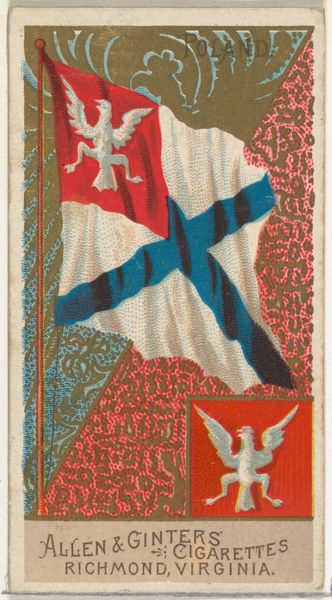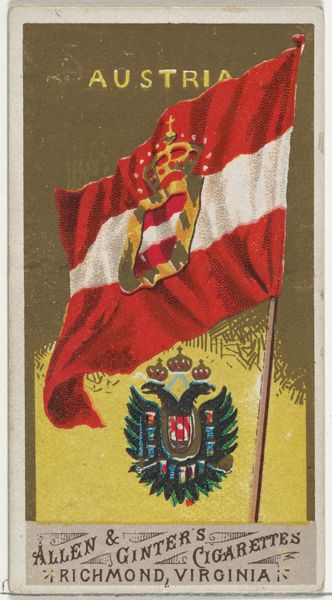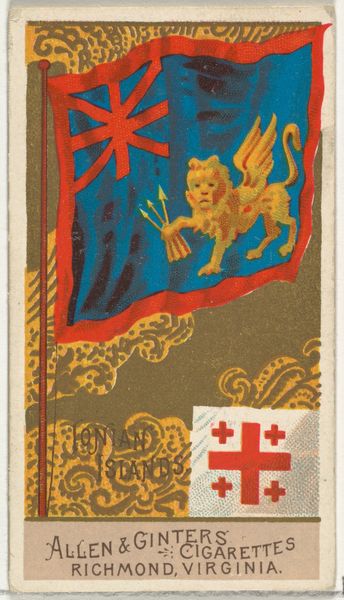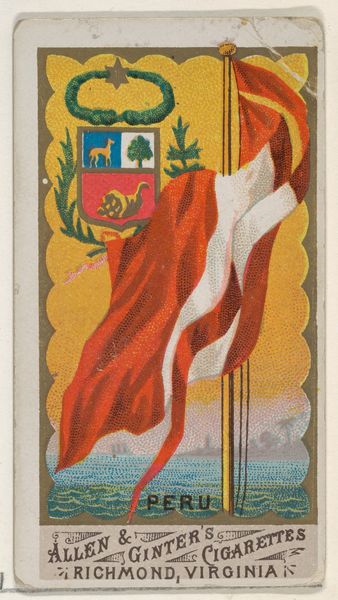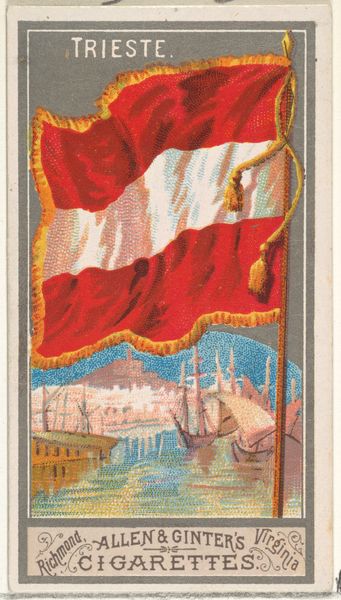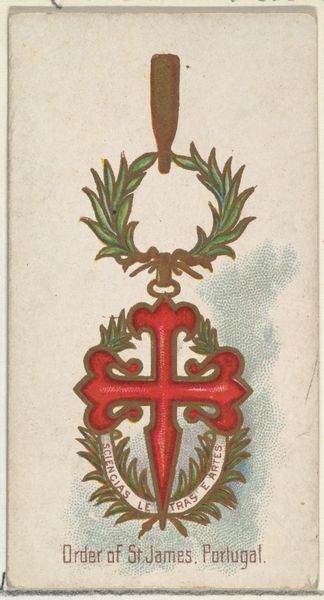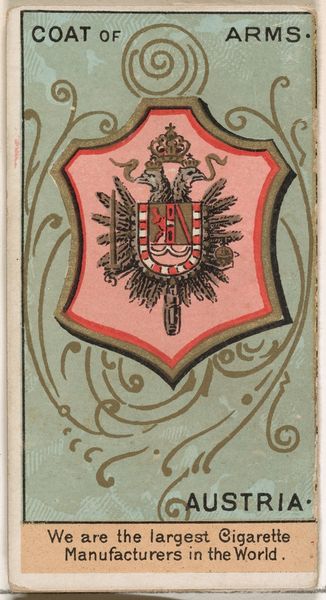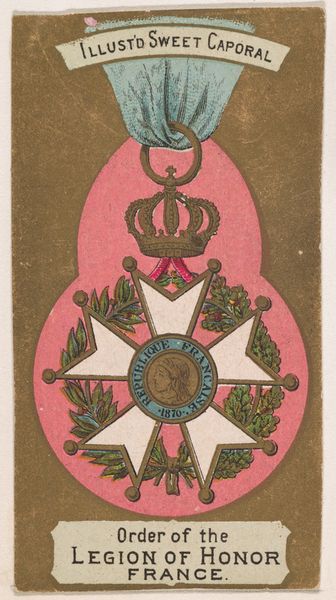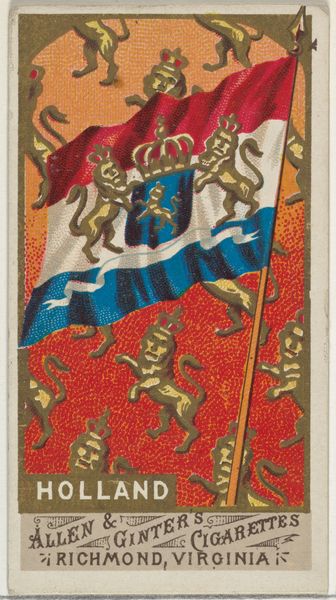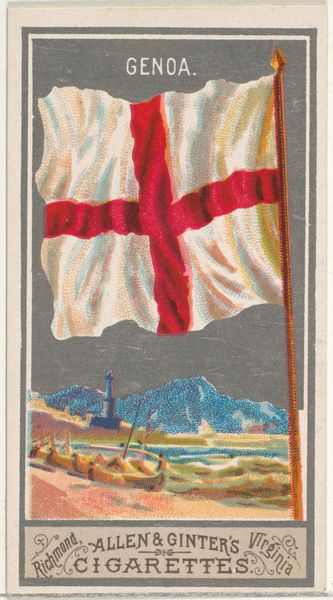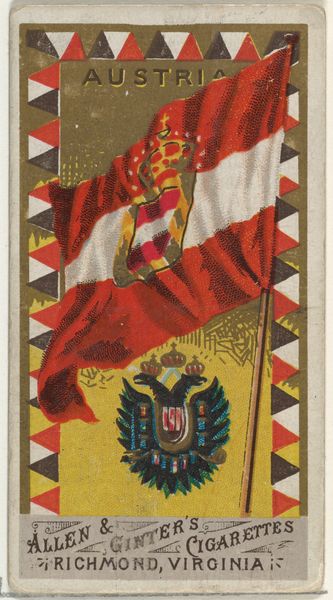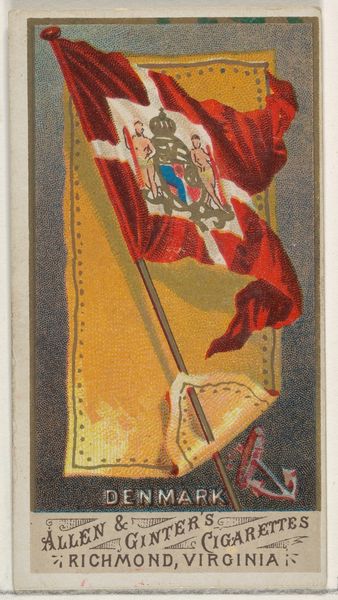
Tuscany, from Flags of All Nations, Series 2 (N10) for Allen & Ginter Cigarettes Brands 1890
0:00
0:00
Dimensions: Sheet: 2 3/4 x 1 1/2 in. (7 x 3.8 cm)
Copyright: Public Domain
Curator: Let's turn our attention to this piece entitled "Tuscany, from Flags of All Nations, Series 2," dating back to 1890. It comes from a series of cigarette cards produced by Allen & Ginter. Editor: At first glance, I’m struck by its dense composition. There's this central flag, brightly colored, set against a busy, almost overwhelming backdrop of floral patterns. Curator: These cards served as advertisements and collectibles. The Flags of All Nations series reflects a late 19th-century fascination with globalism, particularly in the context of growing American imperialism. These were tangible markers of trade and geopolitical influence, especially potent in a time of increasing American expansion. Editor: So, even a seemingly innocuous image like this carried layers of meaning related to labor, commodity culture, and even political dominance. How were these prints manufactured? Curator: Well, as a print, its reproduction democratized its image; a mass-produced etching accessible to consumers of the time. Allen & Ginter produced them to stiffen their packaging and also to incentivize purchasing by creating collectibles, each hinting at underlying imperialist aspirations. The images themselves were probably drawn or painted originally. Editor: It makes you think about the often-overlooked labor involved. These were consumer goods at a specific historical juncture and circulated widely because of the availability of certain technologies, not separate from global systems of extraction. How were flags from other nations treated in comparison? Curator: The flags and regional identities are almost exoticized; Tuscany is turned into a sort of emblem ready for capitalist consumption. It highlights how nations are transformed into images in order to be branded and collected in that era. Other nations were given a similar flattening, representative of a Western desire to organize the globe into easily digestible packets of information. Editor: This really illustrates how even the most mundane objects carry the weight of their production context and speak volumes about societal values at the time. Curator: Indeed. When we see these images today, we can think more carefully about the relationship between image production, consumer culture, and imperialist ideologies. Editor: Looking closely at its materiality really transforms it—I'm rethinking its historical weight completely. Thank you!
Comments
No comments
Be the first to comment and join the conversation on the ultimate creative platform.
